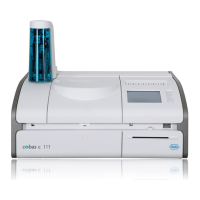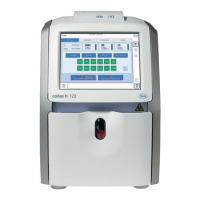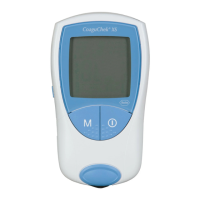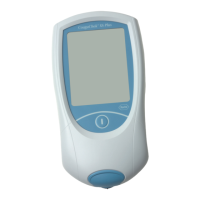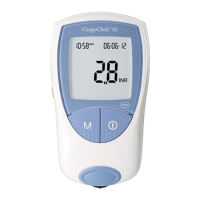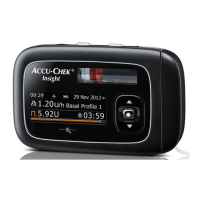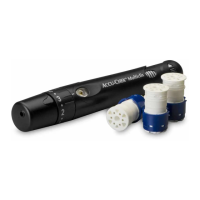18 Safety precautions
Roche Diagnostics
cobas
®
pulse · Software version 01.03 · User Assistance · Publication version 1.0
Safety precautions
To avoid serious or fatal injury, read and
comply with the following safety precautions.
User qualification
Insufficient knowledge and skills
To ensure correct operation of cobas
®
pulse:
r Only trained healthcare professionals may operate the
instrument.
r Users must have received comprehensive instruction
in the operation, QC, and care of cobas
®
pulse.
Safe and proper use of the system
Non-approved parts
Use of non-approved parts or devices may result in
malfunction of the system and may render the warranty
null and void.
r Use only parts and devices approved by Roche
Diagnostics.
Electromagnetic compatibility (EMC)
The system complies with the emission and immunity
requirements described in IEC 61326-2-6. It has been
designed and tested to CISPR 11 Class B.
In a domestic environment it may cause radio
interference, in which case, you may need to take
measures to mitigate the interference.
The electromagnetic environment in which the
cobas
®
pulse system will be operated should be
thoroughly evaluated prior to operation of the device.
This equipment has been tested and found to comply
with the limits for a Class B digital device, pursuant to
Part 15 of the FCC Rules. These limits are designed to
provide reasonable protection against harmful
interference in a residential installation. This equipment
generates, uses and can radiate radio frequency energy
and, if not installed and used in accordance with the
instructions, may cause harmful interference to radio
communications.
However, there is no guarantee that interference will not
occur in a particular installation. If this equipment does
cause harmful interference to radio or television
reception, which can be determined by powering the
equipment off and on, the user is encouraged to try to
correct the interference by one or more of the following
measures:
• Reorient or relocate the receiving antenna.
• Increase the separation between the equipment and
receiver.
• Connect the equipment into an outlet on a circuit
different from that to which the receiver is connected.
1 General safety information
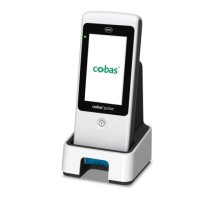
